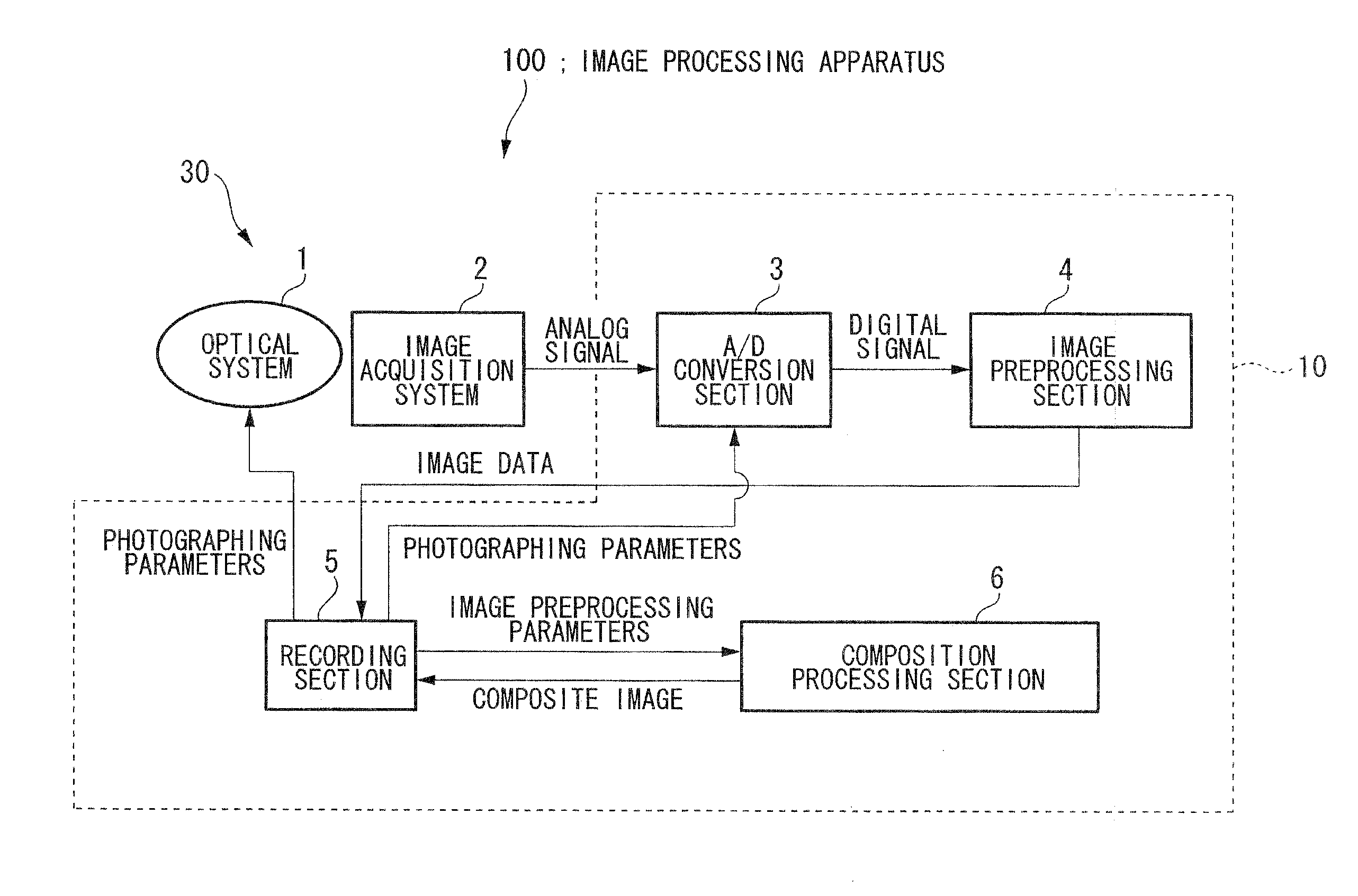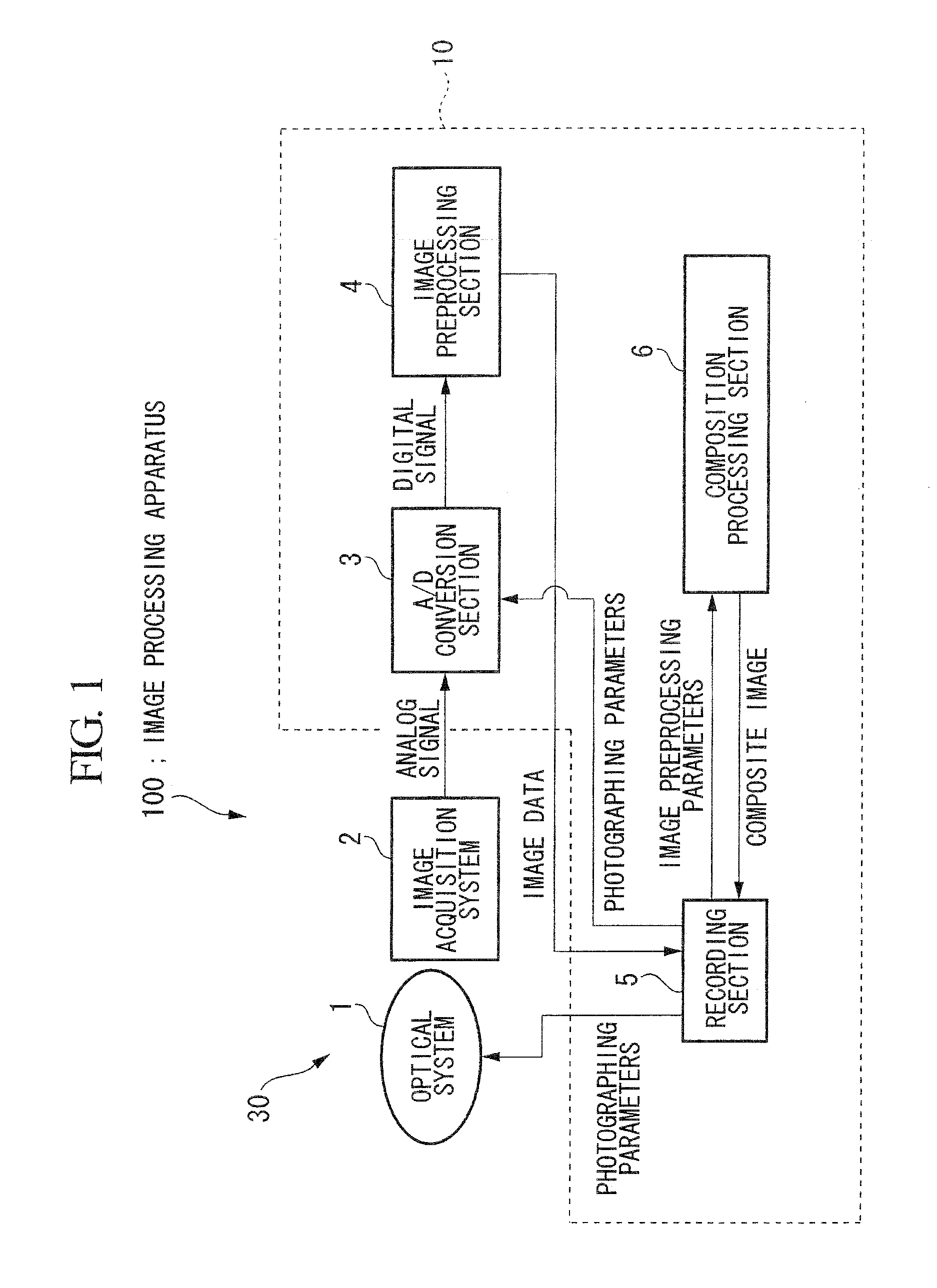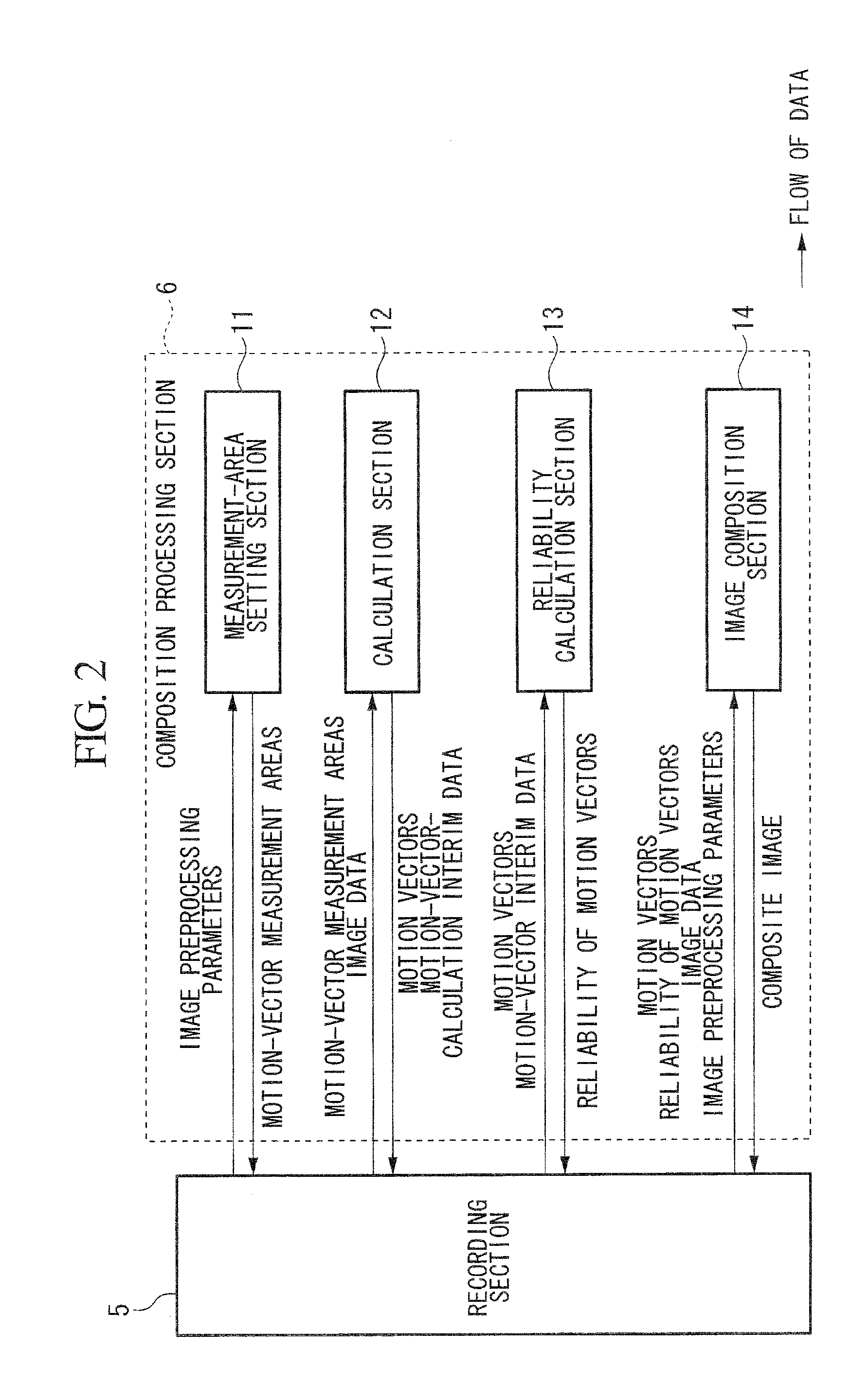Image processing apparatus, image processing method, and computer-readable recording medium having image processing program recorded thereon
a technology of image processing and recording medium, which is applied in the field of image processing apparatus, image processing method, and computer-readable recording medium having an image processing program recorded thereon, which can solve problems such as double lines in composite images
- Summary
- Abstract
- Description
- Claims
- Application Information
AI Technical Summary
Benefits of technology
Problems solved by technology
Method used
Image
Examples
first embodiment
[0031]A first embodiment of the present invention will be described using FIGS. 1 to 7. In this embodiment, a description will be given of an example case where an image composition section is used for noise reduction processing in which a plurality of images are combined. In FIG. 1, an image processing apparatus 100 includes an image acquisition section 30 and an image processing section 10.
[0032]The image acquisition section 30 includes, for example, an optical system 1 that forms a subject image and an image acquisition system 2 that applies photoelectric-conversion to the optical subject image formed by the optical system 1 and outputs an electrical image signal (hereinafter, the image corresponding to the image signal is referred to as “input image”).
[0033]The image processing section 10 includes an analog / digital conversion section (hereinafter referred to as “A / D conversion section”) 3, an image preprocessing section 4, a recording section 5, and a composition processing sect...
second embodiment
[0073]Next, a second embodiment of the present invention will be described using FIGS. 8 to 10.
[0074]An image composition section of this embodiment differs from that of the first embodiment in that, whereas the image composition section 14 of the image processing apparatus of the first embodiment performs coefficient control with respect to the reliability of the motion vector such that composition is suppressed for areas where the reliability of the motion vector is low, the image composition section of this embodiment controls the coefficient of the inter-image feature quantity according to the reliability of the motion vector such that composition is suppressed for areas where the reliability of the motion vector is low. An image processing apparatus of this embodiment will be described below mainly in terms of the differences from that of the first embodiment, and a description of similarities will be omitted.
[0075]The image composition section corrects misalignment between the...
third embodiment
[0085]Next, a third embodiment of the present invention will be described using FIGS. 2, 11, and 12B. This embodiment differs from the above-described first and second embodiments in that composition is suppressed for areas where the reliability of the motion vector is low, by using a different coefficient table that is used to control the composition ratio, according to the reliability of the motion vector. An image processing apparatus of this embodiment will be described below mainly in terms of the differences from those of the first and second embodiments, and a description of similarities will be omitted.
[0086]The image composition section corrects misalignment between the plurality of images based on the motion vectors, determines the composition ratio using a first coefficient table that is used for a high-reliability composition ratio, for areas where the reliability of the motion vector is high, determines the composition ratio using a second coefficient table that is used...
PUM
 Login to View More
Login to View More Abstract
Description
Claims
Application Information
 Login to View More
Login to View More - R&D
- Intellectual Property
- Life Sciences
- Materials
- Tech Scout
- Unparalleled Data Quality
- Higher Quality Content
- 60% Fewer Hallucinations
Browse by: Latest US Patents, China's latest patents, Technical Efficacy Thesaurus, Application Domain, Technology Topic, Popular Technical Reports.
© 2025 PatSnap. All rights reserved.Legal|Privacy policy|Modern Slavery Act Transparency Statement|Sitemap|About US| Contact US: help@patsnap.com



